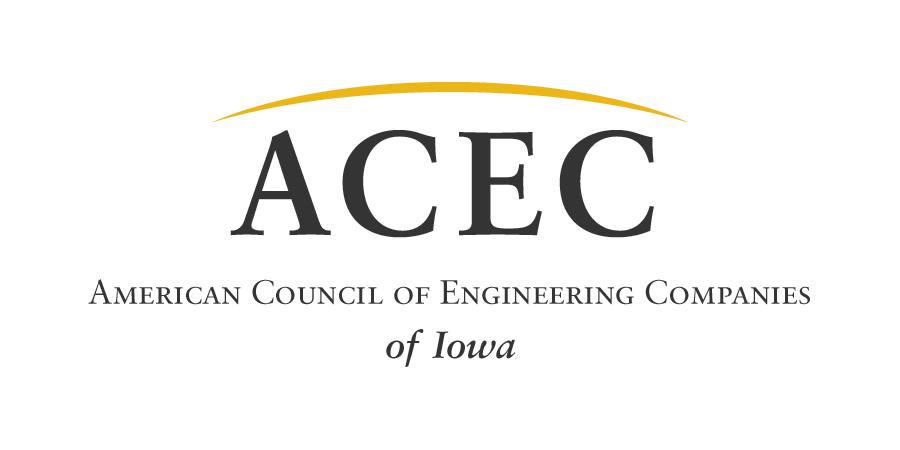SEALING & CERTIFICATION RULESEarly in 1997, the Iowa State Board of Engineering and Land Surveying Examiners changed the administrative rules dealing with the sealing and certification of plans. Following are ten of the more commonly asked questions regarding these rules. This information originally appeared in the Iowa Engineering Society's Exponent magazine and was written by Jolee Belzung, P.E., who at that time was sitting on the Iowa Engineering and Land Surveying Examining Board. Commonly Asked Questions: WHY DID THE BOARD INITIATE THESE CHANGES? The new rules were implemented for many reasons. It was suggested by the Building Officials that the engineers' and architects' seals be more uniform so that they could easily be determined to be in compliance with the State law. The rules are also based upon language in the Model Law adopted by the National Council of Examiners for Engineering and Surveying, in an attempt to make Iowa's laws consistent with laws in other states. The use of electronic technology necessitated additional language related to computer generated seals and signatures. DO I NEED TO OBTAIN A SEAL? Computer generated seals may be used, which may eliminate the need to purchase a rubber stamp or embossed seal. WHAT IF MY CURRENT SEAL SAYS "PROFESSIONAL ENGINEER" (OR "LAND SURVEYOR") - DO I NEED TO OBTAIN A SEAL THAT SAYS "LICENSED PROFESSIONAL ENGINEER" (OR "LICENSED PROFESSIONAL LAND SURVEYOR")? If your seal says Registered Professional Engineer (or Land Surveyor), then you will need to obtain a new seal. If your seals says only Professional Engineer (or Land Surveyor), then your current seal is acceptable to the Board. The term "licensed" was deemed more applicable to a person who has a legal right to practice engineering or land surveying. The word "registered" implies being on a list, without any rights associated with that listing. WHAT IS MEANT BY "OFFICIAL COPIES"? Documents submitted to a client are included in the definition of "official copies." Every client has different needs with respect to the number and type of documents they receive. You will need to meet those needs. The Board recognizes that some clients require many sets of documents. Not all of those documents need to be considered official copies. In many instances, you may need to only provide one "official" set of documents to a client and several other unofficial sets. Determine with your client how many sets will become the record set or become part of their official file, and certify that number. The Board does not prohibit certifying copies that are not "official copies." We only require that "official copies" be certified. "Official copies" are also those documents submitted to a public agency. This means agencies that review the documents for permitting purposes. Each agency has its own rules and reasons for the number of copies required to be submitted. The number of "official copies" will be the minimum number required for submittal. CAN I SIGN AND SEAL THE ORIGINALS AND THEN MAKE COPIES? No. The intent of the rule is to not have the reproducible original documents signed and dated. That protects the licensee from unauthorized reproduction of their documents and misuse of their certification. It is suggested that when drawings are finalized and official copies are sent out, a certified set also be included in your records. Like all other official copies, your official set would be signed copies, not originals. CAN I HAVE EACH SUBCONSULTANT CERTIFY THEIR OWN PLAN SHEETS RATHER THAN CIRCULATE THE COVER SHEET AMONG THE MANY CONSULTANTS? No. Each professional involved in a project must certify the part for which they are in responsible charge. The rules specifically require the certification on the first page of a submittal, or an attached cover sheet. This assists the review agency in determining which portions of the plans, if any, have not been certified by a design professional. THE RULES STATE THAT THE SEAL AND ORIGINAL SIGNATURE SHALL BE APPLIED ONLY TO A FINAL SUBMISSION. DO I NEED TO CERTIFY SUBMITTALS TO PUBLIC AGENCIES FOR REVIEW PURPOSES? That depends on the nature of the submittal. If you are submitting preliminary plans to receive an agency's comments on a particular issue, then the plans must not be certified. They should instead be clearly identified as preliminary. If you feel the plans are complete and are acceptable for permitting purposes, they must be certified. Even though past history would make you anticipate minor review comments by the public agency, you should not submit drawings for permitting purposes that you feel are incomplete. If review comments necessitate changes, then revisions can be issued with updated signatures and dates. CAN I INCORPORATE DIFFERENT WORDINGS IN THE CERTIFICATION THAT WILL ALLOW ONE CERTIFICATION TO MEET THE REQUIREMENTS OF THE LAW AND ANOTHER AUTHORITY I AM PERFORMING WORK FOR? No. It is preferred that the engineering or land surveying certification or both be utilized separate from any other certification. The wording set out in the rules conforms to specific requirements in the Code of Iowa. It is not acceptable to develop a combined engineering and land surveying certification either. IF I PREPARE A ONE PAGE DOCUMENT, SAY A PLAT OF SURVEY, IS IT REALLY NECESSARY TO HAVE THE CORRECT CERTIFICATION AND SEAL IN A BLOCK AS SHOWN IN THE RULES, OR COULD THEY BE PLACED AS SPACE IS AVAILABLE ON THE DOCUMENT? No. It is important to keep the seal and the certification together. It is not mandatory that they be in a block as shown in the rules, but they should be side-by-side as shown in the rules. HOW DOES THIS NEW CERTIFICATION LANGUAGE RELATE TO THE REVIEW AND CERTIFICATION OF WORK THAT WAS PREPARED BY OTHERS? The Code of Iowa requires all engineering and land surveying documents to be certified by the licensee in responsible charge. The definition of "in responsible charge" is not new. It is defined as "having direct control of and personal supervision over any land surveying work or work involving the practice of engineering. One or more person, jointly or severally, may be in responsible charge." This language indicates that a licensee may not review and certify the work of others. However, with the correct authority and ethical responsibility, you may be able to become in responsible charge of a project, even though you were not involved in the project in its initial stages. |

